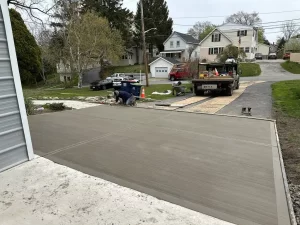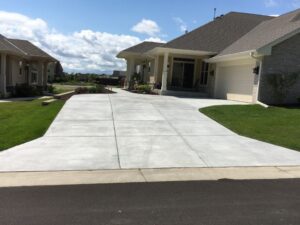To select materials for your masonry project, consider factors like durability, aesthetic appeal, environmental impact, and maintenance requirements to make an informed decision that aligns with your design preferences and structural needs.
Furthermore, the initial cost and future replacement expenses should also be factored into your decision-making process. Assessing the lifespan, energy efficiency, and the overall carbon footprint of each material will help ensure that your masonry project not only meets current aesthetic and structural requirements but also contributes to long-term sustainability.
This approach ensures that the materials you choose not only fit the immediate needs of your project but also align with broader environmental and budgetary considerations.
Understanding Different Types of Stone in Masonry
NG Masonry and Construction believes that selecting the right stone for your masonry project involves understanding the variety of available stone types and their specific applications. Stones vary in appearance, strength, and suitability for different environmental conditions, making the choice of materials a crucial factor in your construction project.
In the selection process, the aesthetic appearance and structural integrity of different stones play a fundamental role. For example, granite and limestone are popular choices for their durability and the wide range of colors they offer, making them perfect materials for both decorative elements and load-bearing walls. Moreover, the choice of natural materials like stone over alternatives like composite materials often involves considerations of the product's life cycle, including its carbon footprint and the costs of materials over time.
Utilizing stones in varied patterns and colors also allows for greater design flexibility, meeting both the practical requirements of structural elements and the design preferences of the project. This thorough evaluation ensures that each stone product not only enhances the building's appearance but also upholds the necessary performance standards under varying environmental conditions.
Natural Stone vs. Stone Veneer: Weighing Aesthetics and Performance
Natural stone offers unparalleled beauty and structural integrity, making it an excellent choice for both load-bearing walls and decorative elements. Stone veneer, while not as durable, provides a cost-effective and aesthetically diverse alternative, allowing for a wider variety of colors and patterns in design.
When choosing between natural stone and stone veneer, it's crucial to consider not only the initial cost but also the long-term sustainability and maintenance requirements. Natural stone, being a highly durable material, typically incurs less frequent replacement costs and demands minimal maintenance, making it an ideal choice for harsh weather conditions and high-traffic outdoor applications.
On the other hand, stone veneer, while more affordable and versatile in terms of design and colors, may require more regular maintenance and careful consideration of environmental factors to ensure its longevity. Both options offer significant aesthetic appeal and can be tailored to meet specific structural capabilities and design preferences, making your choice a crucial factor in the overall design process and sustainability of the building project.
Composite Material and Recycled Steel: Modern Alternatives for Masonry
For those looking at sustainable materials, composite materials and recycled steel represent modern alternatives that reduce the carbon footprint of your building project. These materials offer flexibility in both structural and decorative applications while supporting energy conservation.
Utilizing composite materials and recycled steel in masonry not only supports the structural integrity of buildings but also significantly enhances their energy performance. These materials are an excellent choice for commercial buildings and outdoor applications, where long-term durability and resistance to environmental conditions are paramount. The use of these sustainable materials helps minimize the overall carbon footprint of construction projects, contributing to more environmentally friendly building practices.
Furthermore, the flexibility in patterns and colors available with composite materials allows for a unique aesthetic appearance that can be tailored to specific design preferences and structural requirements. This makes them a popular choice among architects and builders looking to combine innovative construction techniques with energy conservation and design aesthetics.
Design Considerations for Masonry in Residential and Commercial Buildings
The design process in masonry construction requires careful consideration of both the aesthetic and functional aspects of building materials to ensure they meet the specific requirements of the project. In masonry construction, achieving the right balance between aesthetic appeal and functional performance requires detailed attention to the choice of building materials and their application in specific environments.
For instance, the selection of materials such as porcelain tiles for flooring or clay brick products for exterior cladding must align with the structural requirements and environmental conditions of the area. These choices impact not only the building’s visual appearance but also its ability to withstand harsh weather conditions without extensive maintenance.
Furthermore, considering the energy demand and the construction techniques employed can lead to more sustainable building practices, significantly reducing the overall energy losses. This comprehensive approach ensures that each material, whether a natural or composite option, is chosen based on its performance, life expectancy, and contribution to the building’s energy efficiency, ultimately leading to a more informed decision that benefits building users and supports long-term sustainability.
Here are several key advantages of using composite materials and recycled steel in masonry:
- Reduced Environmental Impact: Both composite materials and recycled steel significantly lower the ecological footprint of construction projects by minimizing waste and reducing the need for new resource extraction.
- Enhanced Structural Integrity: These materials strengthen the overall durability of structures, providing superior resistance against environmental stresses such as corrosion, weathering, and seismic activities.
- Energy Efficiency: Composite materials and recycled steel improve thermal insulation properties, which can lead to substantial energy savings over the lifecycle of a building.
- Aesthetic Versatility: Available in a variety of colors and patterns, these materials offer architects and designers the flexibility to create visually appealing exteriors and interiors without compromising on performance.
- Long-term Sustainability: Using sustainable materials like recycled steel and composites contributes to long-term building sustainability, supporting efforts towards greener building practices and certifications.
- Cost-Effectiveness: While the initial cost may be higher, the longevity and reduced maintenance needs of these materials make them a cost-effective choice in the long run.
Design Flexibility with Various Building Materials
Building materials like clay bricks, concrete forms, and natural stones offer a wide range of design flexibility. The choice between different materials should reflect the specific structural and aesthetic needs of the project, considering factors like the climate and the intended use of the building.
The diversity in building materials, such as the vibrant variety of colors in porcelain tiles or the rugged durability of concrete forms, offers architects and builders the freedom to tailor their designs to meet the unique demands of each project. This flexibility is essential when considering factors such as energy conservation, structural integrity, and the building's appearance.
Utilizing materials like recycled steel in structural elements or choosing sustainable materials for outdoor applications can significantly enhance a building's environmental performance and reduce its carbon footprint.
Moreover, the ability to mix materials like natural stone with modern construction techniques allows for innovative design processes that cater to both aesthetic preferences and practical requirements, such as load-bearing capabilities and climate considerations. Such thoughtful material decisions ensure that each construction project not only meets the initial design vision but also maintains its integrity and functionality over its lifetime.
Energy Efficiency and Environmental Impact of Your Material Choices
Selecting energy-efficient materials such as recycled steel and natural stone can significantly reduce the energy demand and overall environmental impact of your construction. It’s important to assess the lifecycle energy conservation and carbon emissions associated with your choice of construction materials.
Incorporating energy-efficient materials into the design process not only meets the immediate needs of the construction project but also addresses broader environmental concerns by reducing energy losses and minimizing the embodied carbon footprint. For instance, using materials like porcelain tiles or recycled steel in both interior and exterior applications can greatly enhance the energy conservation of a building, reducing both the initial energy demand during construction and the long-term operational costs.
Additionally, these materials often require less frequent replacement, thereby reducing waste and the need for disposal of materials, further mitigating environmental impact. As such, making an informed decision about the choice of construction materials, considering factors like durability, maintenance requirements, and the ability to withstand harsh weather conditions, becomes a crucial factor in building environmentally sustainable and energy-efficient structures.
Compressive Strength: The Backbone of Durable Masonry
The compressive strength of materials like natural stone and concrete forms is a crucial factor in their ability to support load-bearing walls in commercial buildings. Higher strength translates to better structural capability and longevity.
The choice of materials with high compressive strength is not only a practical decision but also an economic one, as it impacts the initial cost and the long-term durability of the building. Materials like concrete forms and natural stone, which are known for their robust structural integrity, are essential for commercial buildings where safety and longevity are paramount. These materials can withstand the harsh environmental conditions they might face, reducing the need for future replacement and maintenance.
Furthermore, selecting such durable materials helps in reducing the carbon footprint of the construction project, as their long life reduces the frequency of resource turnover. This makes them an ideal choice for load-bearing walls and other structural elements where performance under stress and aesthetic appearance are both crucial considerations.
The Role of Steel in Enhancing Masonry Structures
Steel is often used to reinforce masonry structures, enhancing their tensile strength and overall durability. It’s an ideal choice for areas prone to harsh weather conditions, offering additional security against structural failures.
Incorporating steel into masonry structures not only enhances their structural capability but also introduces an element of design flexibility, allowing for the creation of more complex and innovative architectural elements. Steel reinforcement is a popular choice in construction due to its ability to maintain the integrity of masonry in various environmental conditions, particularly in areas susceptible to seismic activity or extreme weather.
This integration of steel significantly improves the life expectancy and performance of masonry structures, making it a crucial factor in the design process of commercial buildings. Moreover, the use of recycled steel contributes to sustainability goals by reducing the carbon footprint associated with new material production, aligning with modern construction techniques that prioritize both durability and environmental responsibility.




